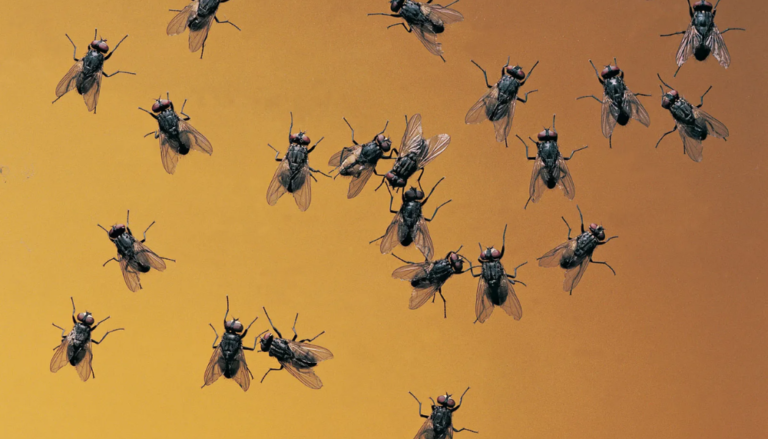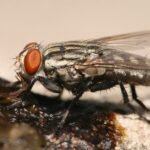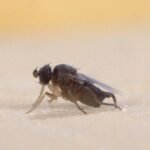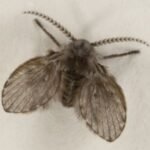What are Flies?
Flies are a diverse group of insects belonging to the order Diptera, characterized by a single pair of wings and typically a pair of halteres, which are small knobbed structures used for balance during flight. With over 150,000 known species, flies inhabit virtually every ecosystem on Earth, ranging from the deepest caves to the highest mountains. They play crucial roles in ecosystems as pollinators, decomposers, and predators, but some species are also known as pests due to their ability to transmit diseases to humans, animals, and plants. Flies undergo complete metamorphosis, transitioning through egg, larval (maggot), pupal, and adult stages, with each stage adapted to specific ecological niches and behaviors.
Most Common FLIES in NorthEast Ohio?

House Flies
The house fly is perhaps the most ubiquitous fly species in Northeast Ohio, as it is worldwide. These flies are typically found around human habitations, particularly where food is prepared or stored. They breed in decaying organic matter such as garbage, manure, and compost heaps. House flies are not only a nuisance but also potential carriers of diseases, making their control important in residential and commercial settings.

Fruit Flies
Fruit flies are common in Northeast Ohio, especially in kitchens and areas where fruits and vegetables are stored. These small flies are attracted to ripe or fermenting fruits and vegetables, where they lay their eggs. While they are not harmful to humans, fruit flies can be a significant annoyance, especially when they infest food storage areas. Proper sanitation and fruit storage techniques can help reduce their populations indoors.

Cluster Flies
Cluster flies are a nuisance pest in Northeast Ohio, particularly during the fall. These flies seek shelter in homes and other buildings to overwinter, often gathering in large numbers in attics, wall voids, and other protected spaces. While they don’t pose a direct threat to humans, their presence can be alarming and lead to sanitation issues.

Blow Flies
Blow flies are attracted to decaying organic matter, including carcasses, garbage, and compost. While they serve as important decomposers in natural ecosystems, they can be a nuisance around homes and businesses. In Northeast Ohio, blow flies may become more prevalent during the warmer months when organic matter decomposes more rapidly.
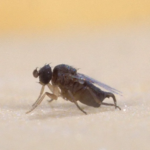
Phorid Flies
Phorid flies, or humpbacked flies, are small insects from the family Phoridae, characterized by their arched thorax and erratic flight patterns. They thrive in moist, decaying organic matter such as drains, garbage, and compost heaps. Although generally not harmful, they can be a nuisance and indicate unsanitary conditions. In healthcare settings, they may pose a health risk by spreading pathogens. Control measures include thorough sanitation, moisture control, and professional pest management.

Deer Flies
Deer flies are another biting fly species present in Northeast Ohio, often found near wooded areas and bodies of water. These flies are known for their painful bites, which they use to obtain blood meals from humans and other animals. While they are primarily a nuisance, their bites can sometimes lead to allergic reactions or secondary infections.
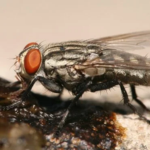
Flesh Flies
Flesh flies are insects from the family Sarcophagidae, known for their habit of laying larvae on decaying meat, carrion, or open wounds in living organisms. They are typically gray with distinctive longitudinal dark stripes on their thorax and a checkerboard pattern on their abdomen. These flies play a role in the decomposition process but can also spread diseases and infect wounds. Flesh fly infestations indicate poor hygiene and can be managed through proper sanitation and waste disposal. Professional pest control may be necessary for severe infestations.
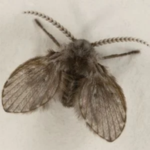
DrAIn Flies
Psychodidae, commonly known as drain flies, sink flies, filter flies, sewer flies, or sewer gnats, is a family of true flies. Some genera within this family have short, hairy bodies and wings, giving them a “furry” moth-like appearance, which is why they are sometimes referred to as moth flies. Members of the subfamily Phlebotominae, which are hematophagous (blood-feeding), may be called sand flies in some regions, although this term is also used for other unrelated fly species. (Image Source)
How we can help with FLIES?
Managing ant infestations around your home doesn’t have to be a hassle. Say goodbye to DIY methods and trust the expertise of RIDD-X Pest Control. Our knowledgeable team is well-versed in the various ant species prevalent in Northeast Ohio, ensuring effective elimination strategies. We also offer solutions for cockroaches, rodents, and spiders. Take control of your pest problems today by contacting us at (216) 970-8259.
